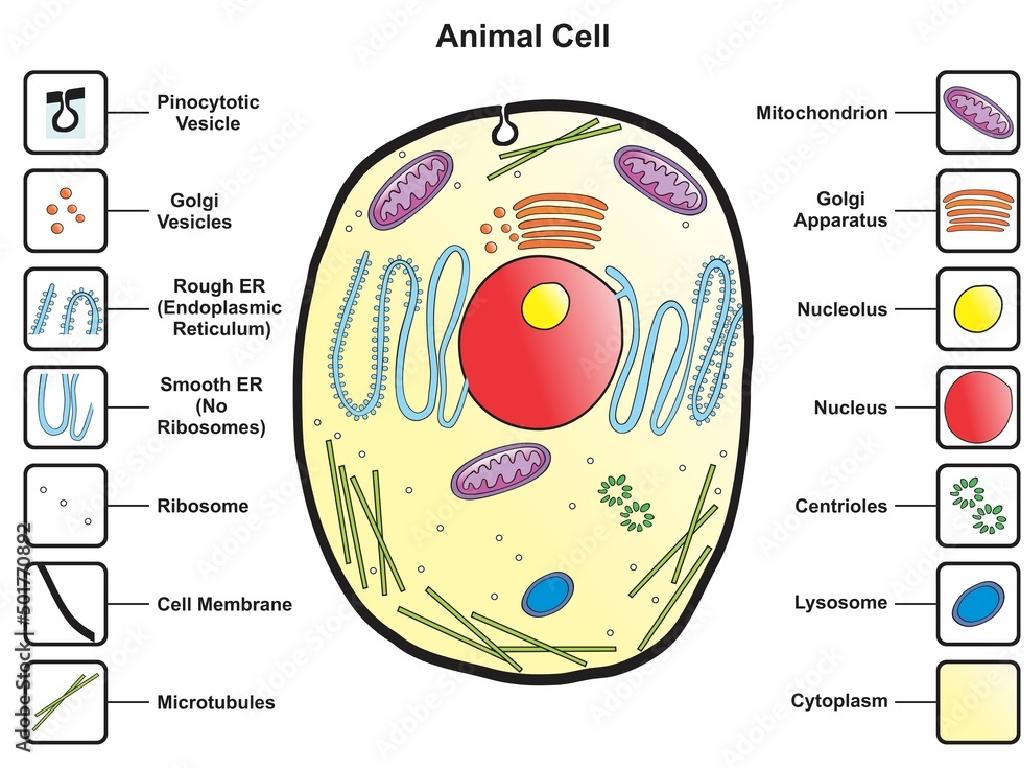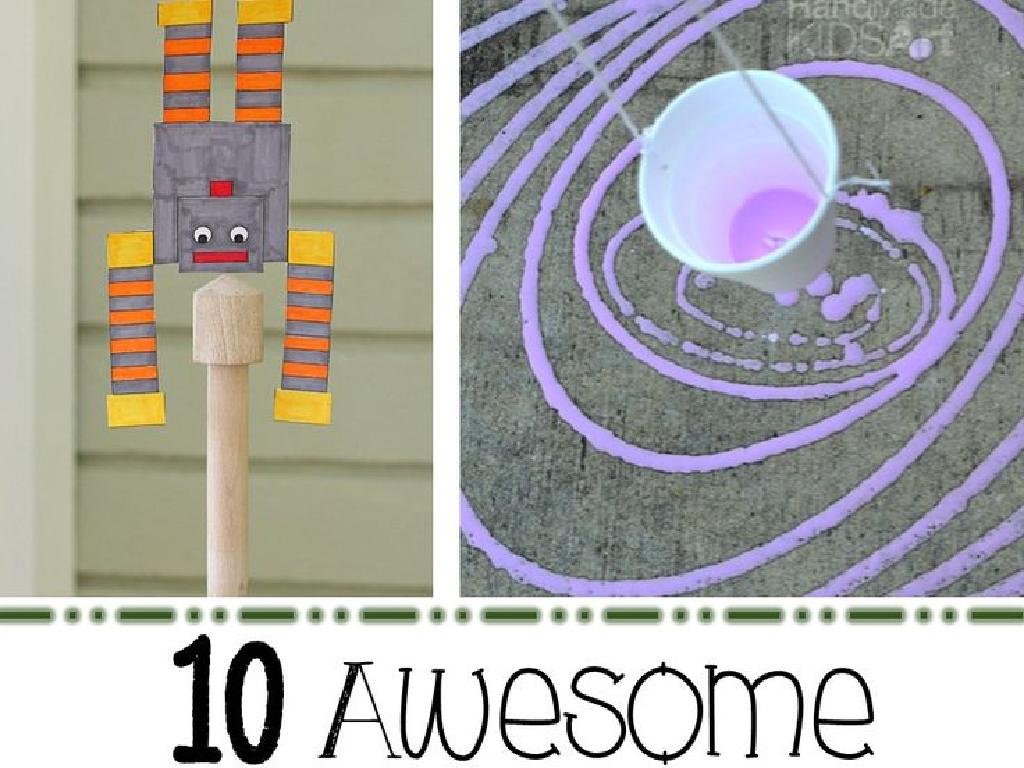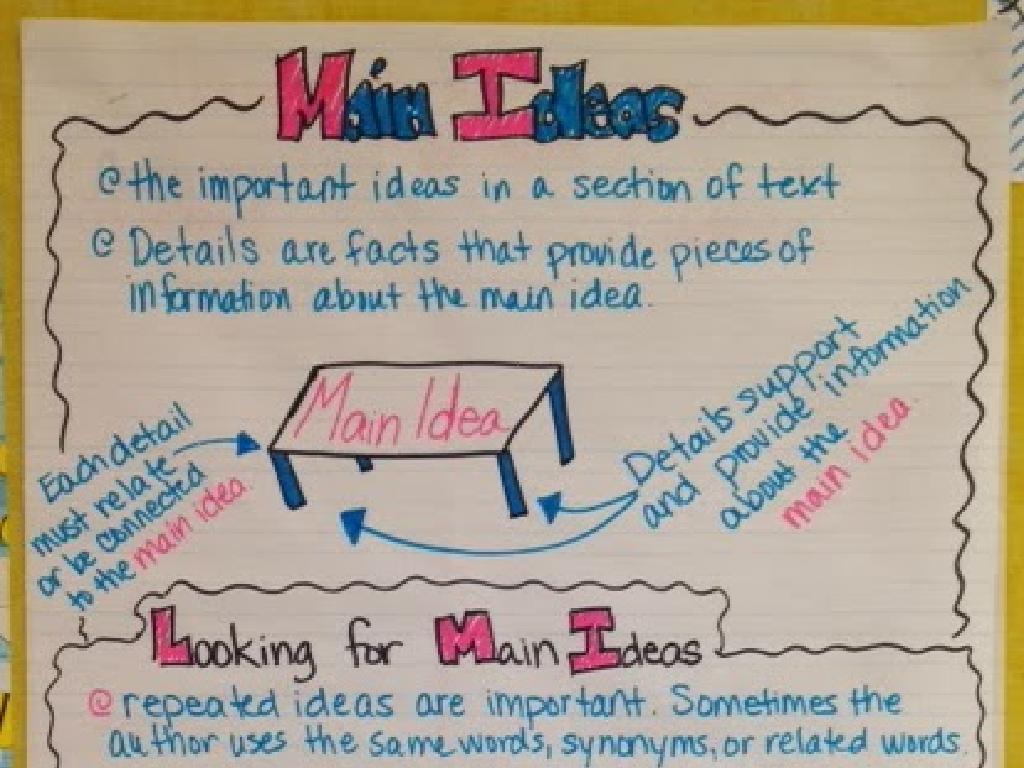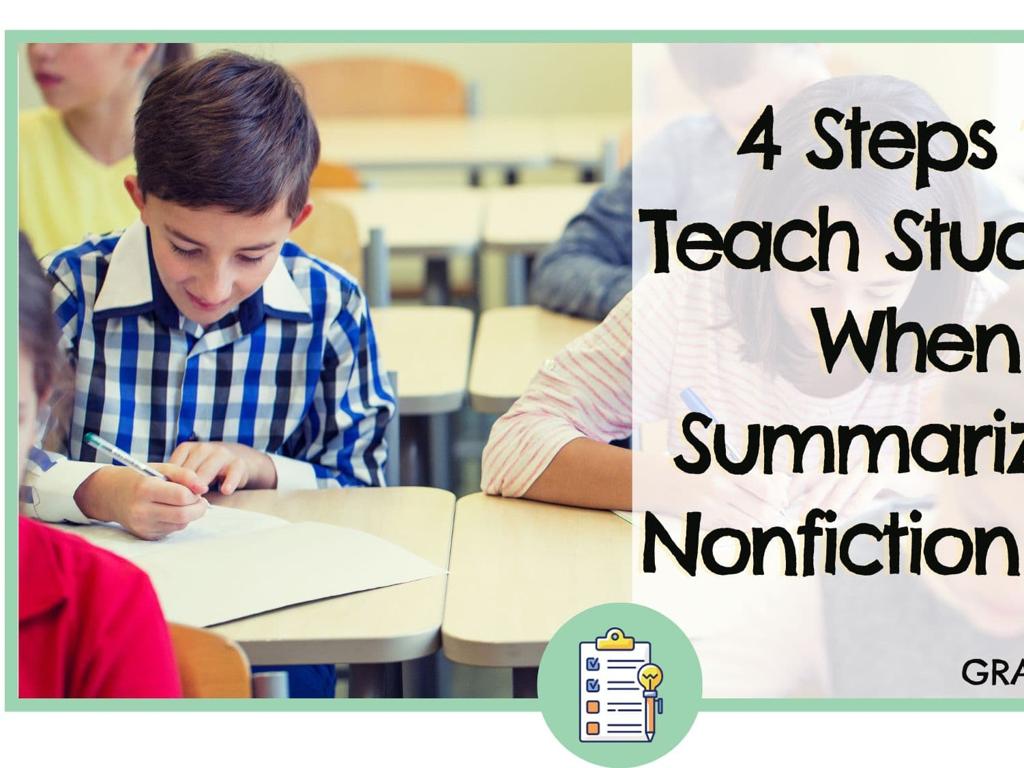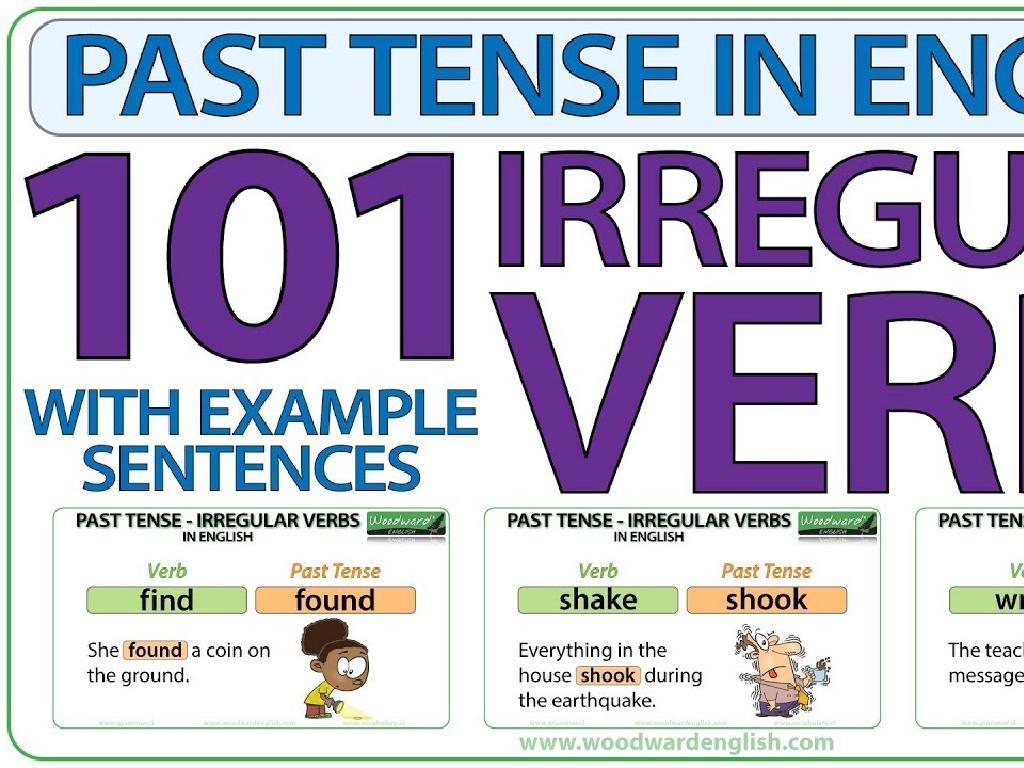Match Problems With Their Solutions
Subject: Language arts
Grade: Seventh grade
Topic: Text Structure
Please LOG IN to download the presentation. Access is available to registered users only.
View More Content
Exploring Text Structure: Problems & Solutions
– What is text structure?
– Importance of problem-solution
– Helps in comprehending & analyzing texts
– Recognizing text structure
– Clues: keywords like ‘challenge’, ‘issue’, ‘resolve’
– Practice with everyday examples
– Look at articles, stories, or even instructions
|
This slide introduces the concept of text structure, focusing on the problem-solution format. Text structure refers to how information is organized in a passage. Understanding this concept is crucial for students as it aids in comprehension and enhances their ability to analyze texts. Emphasize the importance of identifying problems and solutions in texts, as this can help students understand the author’s intent and the text’s message. Provide tips on recognizing this structure through keywords and phrases that signal issues and resolutions. Encourage students to practice by identifying problems and solutions in everyday reading materials, such as news articles, stories, or instructional texts. This will prepare them for more complex literary analysis and improve their overall reading skills.
Understanding Problem-Solution Text Structure
– Define Problem-Solution Structure
– A text format that presents a problem and then outlines a solution.
– Identifying Problems and Solutions
– Look for the issue being discussed and how it is resolved or could be resolved.
– Signal Words for Problem-Solution
– Words like ‘challenge’, ‘issue’, ‘resolve’, and ‘solution’ indicate this structure.
– Practice with Text Examples
|
This slide introduces students to the concept of Problem-Solution text structure, which is commonly used in various forms of writing, from essays to real-world scenarios. Start by defining the structure as one that outlines a problem and then proposes a solution. Teach students how to identify the problem presented in a text and the solution that follows. Highlight key signal words that often indicate a problem-solution structure, such as ‘problem’, ‘solution’, ‘challenge’, ‘resolve’, etc. Provide text examples for students to practice identifying the problem and solution, and discuss as a class. This will help students recognize this structure in their reading and use it in their writing.
Identifying Problems in Texts
– Read a passage as a class
– Discuss the passage’s main problem
– What is the central issue the characters face?
– List clues for problem identification
– Look for words like ‘challenge’, ‘issue’, ‘dilemma’
– Understand problem-solution structure
– Recognize how problems lead to solutions in a story
|
This slide is aimed at teaching students how to identify problems within a text, an essential skill in understanding text structure. Start by reading a passage together to ensure all students are on the same page. Open a discussion about the main problem in the passage, guiding students to think critically about the challenges faced by characters or the central issue presented. Encourage them to list clues such as specific words or phrases that signal a problem. This activity will help students to recognize the problem-solution structure, which is a common text organization method. For the next class, prepare several passages with different problems and solutions to practice this skill further.
Finding Solutions in Texts
– Authors’ presentation of solutions
– How writers solve problems they introduce
– Read passage continuations
– Continue where the last reading left off
– Identify earlier problem solutions
– Find the resolution to previously discussed issues
– Comprehension and analysis skills
|
This slide aims to teach students how to identify solutions provided by authors in texts, which is a key component of understanding text structure. Start by explaining how authors often introduce a problem and then provide a solution, sometimes explicitly and other times implicitly. Encourage students to read beyond the initial problem, looking for continuation of the passage that may hold the solution. Teach them to look for keywords or phrases that signal a resolution or conclusion to the problem. This exercise will enhance their comprehension and analytical skills, enabling them to become more proficient readers. For the class activity, students can work on passages where they first identify the problem and then search for the solution within the text, discussing how the author has structured the text to guide the reader to the solution.
Problem-Solution Text Structure
– Exercise: Match problems to solutions
– Read example texts and connect issues with resolutions
– Discuss solution appropriateness
– In groups, justify why chosen solutions fit the problems
– Explore multiple solutions
– Consider alternative outcomes for the given issues
– Develop critical thinking
|
This slide is designed to engage students in understanding the problem-solution text structure through a practical exercise. Students will read example texts and identify the problems presented and their corresponding solutions. Following this, they will engage in group discussions to explore why certain solutions are appropriate, fostering a deeper understanding of the author’s reasoning. Encourage students to think critically about whether multiple solutions could exist, allowing for a discussion on the complexity of issues and the variety of ways they can be addressed. This activity will help students recognize text structures and enhance their analytical skills.
Problem-Solution Scenarios
– Create problems based on scenarios
– Share ideas with classmates
– Connect problems to solutions
– How can one solution address several problems?
– Explore multiple connections
– One problem may have many ways to solve it
|
This slide is designed for a class activity where students will practice creating and matching problems with their solutions. Students should use given scenarios to come up with their own problems, then brainstorm possible solutions. They will share their ideas with the class to foster a collaborative learning environment. It’s crucial to guide students to see the interconnectivity between problems and solutions, understanding that a single solution can tackle multiple problems, and conversely, a single problem may have various solutions. For the activity, consider breaking the class into small groups, each group working on a different scenario, then sharing their findings with the class. Encourage creativity and critical thinking.
Class Activity: Problem-Solution Match
– Pair up for matching activity
– Receive problem and solution cards
– Match problems with solutions
– Present matches to the class
– Explain why you think they match
|
This interactive class activity is designed to help students understand the text structure of problem and solution. In pairs, students will engage in a hands-on exercise where they will be given a set of cards, some with problems and others with corresponding solutions. Their task is to match each problem card with the correct solution card. After completing the matches, each pair will present their findings to the class and explain the reasoning behind their choices. This will not only reinforce their understanding of the concept but also develop their critical thinking and speaking skills. For the teacher: Prepare sets of problem and solution cards before the class. Consider including a variety of scenarios to cater to different interests. Have a list of guiding questions ready to help students if they struggle to find matches or to facilitate discussion during presentations. Possible variations of the activity could include matching historical events with outcomes, literary conflicts with resolutions, or real-world issues with proposed solutions.
Conclusion: Problem-Solution Text Structure
– Recap problem-solution structure
– Discuss reading comprehension benefits
– Understanding this structure improves grasping the main points of texts.
– Homework assignment
– Find a real-world example of problem-solution in any reading material.
– Reflect on today’s learning
– Think about how identifying problems and solutions can help in daily life.
|
As we wrap up today’s lesson, it’s important to review the key concept of problem-solution text structure. Emphasize how recognizing this structure can enhance students’ ability to understand and analyze texts, leading to better reading comprehension. For homework, students should find an example of this text structure to share in the next class, which will reinforce their learning and provide practical application. Encourage students to reflect on how this skill is not just academic but also applicable in understanding real-world scenarios and problem-solving in their daily lives.

